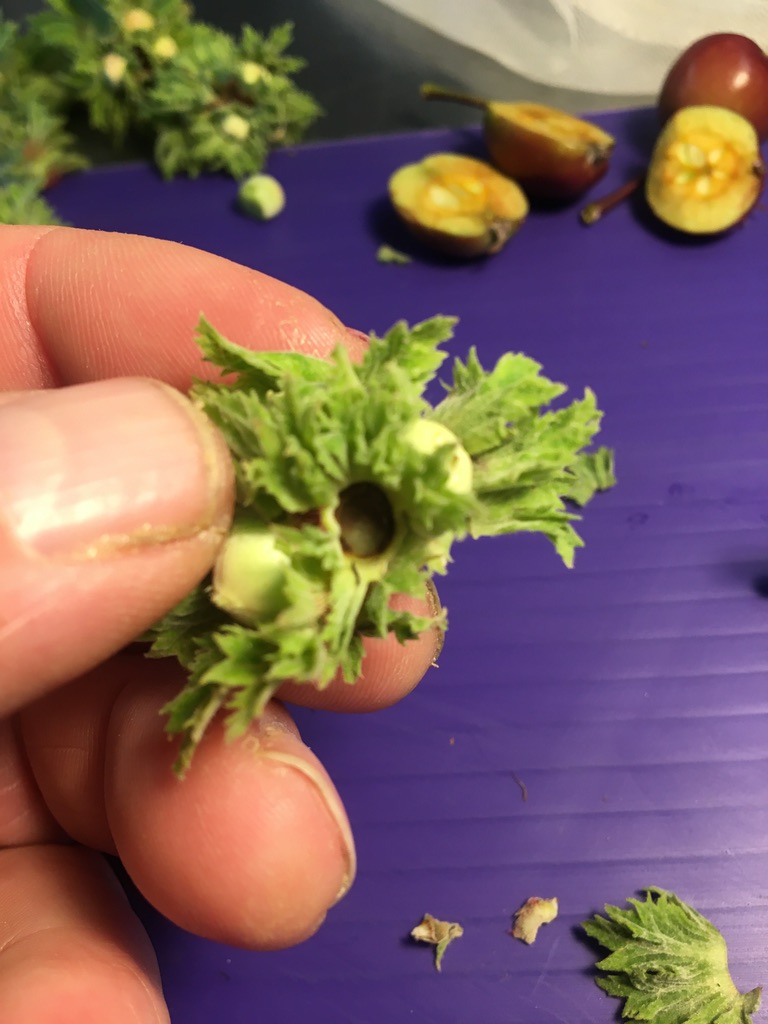Hazelnut growers around the world are familiar with the bacterial pathogen Xanthomonas arboricola pv. corylina, which is the cause of bacterial blight. Historically, no other bacterial pathogens have been problematic in Oregon hazelnuts. However, this season I became concerned with a high frequency of nut clusters with brown, aborted nuts, particularly in ‘Yamhill’. I know I have seen this in past years, but it seems to be fairly prominent this season. Could it be the increased rainfall this spring? When I submitted some of these nuts at the OSU Plant Clinic, pure cultures of Pseudomonas syringae were isolated from them. The pathovar remains unknown at this time pending genetic characterization.
In Europe, for years they have had problems with P. syringae pv. avellana in hazelnut, which causes necrotic buds, rapid whithering of leaves on branches, brown cambium, pale foliage, and tree death.
Photos of symptomatic nuts are pictured at right, note that the husk was brown and black necrotic tissue was found on the basal scar. Subsequently I am finding nuts like these throughout the Valley and on multiple cultivars. A few field consultants have reached out with photos of nuts showing similar symptoms. I would strongly encourage field consultants to submit samples and please let me know what you find.
In the 2021 growing season I found Xanthomonas in the receptacle of the husk (creating a similar symptom) and staining nut shells, but kernels were unaffected in that case. I’ll address that in another post.







